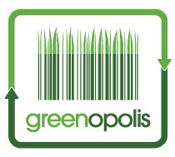Nuclear Dawn
Saving the World From - WITH - Radioactive Waste
Nuclear Dawn: Saving the World From - WITH - Radioactive Waste
Nuclear Waste - “hot rods” of spent uranium in cooling ponds all around the world, radioactive for a million years, raw material waiting for terrorist dirty bombs, a terrifying constant danger for present and future generations.
Bad, right? Well maybe not. Maybe….good. Seems there’s technology afoot that can recycle radioactive resources into clean carbon free energy, all while reducing the nuclear threat.
The December 2009 issue of Esquire features a piece on Eric Loewen, a PhD nuclear engineer who is promoting a technology that can recycle highly radioactive nuclear waste into fuel for sodium cooled fast reactors, which can safely produce lots of clean, zero CO2 energy, and end up reducing the radioactive toxicity of the material it uses two thousand fold, from millions to hundreds of years.
Sound too good to be true? That’s what I thought at first too. But start believing. Loewen is no ideologue, but a sober scientist who is very familiar with nuclear technology. Here are the basics.
-
There’s lots of dangerous nuclear material lying around, both in retired nuclear weapons loaded with plutonium, and in spent uranium fuel rods from existing nuclear energy facilities.
-
We also are a facing a huge threat of climate change that is melting glaciers, creating deserts, and driving species out of existence as you read this.
-
95% of the waste mentioned above is plain old uranium. You wouldn’t want to live in a house made of it, but it’s a natural occurring substance that is not terrifically dangerous.
-
The other 5% is the issue, especially the 1% called transuranics, highly radioactive elements like plutonium.
-
A special reactor, no bigger than 20 feet across, called a sodium fast reactor (it uses liquid sodium instead of water to control the reaction), uses these transuranics as fuel. The reactor emits no CO2, creates lots of electricity from the hot fuel, and shuts itself down if the process goes off-track. No meltdown of the core or any other scary scenario.
-
We have enough of the fuel this thing needs to power the world for tens of thousand of years. And the fuel is rendered LESS radioactive as a result of the process. Instead of a million years worth of dangerous radioactivity, it needs to be contained for 500 years. A much easier propositoin. Good bye, Yucca Mountain.
-
General Electric knows how to make these reactors like they do washing machines and jet engines. No one offs or experimental designs. One of the reasons that France is 90% nuclear powered with a sterling safety record is that they use the same small design for reactors. Like Henry Ford and HP, they’ve replicated a durable model over and over.
But what about safety? Didn’t a lot of people die at Three Mile Island? Well, no. According to research reported on Wikipedia, there were 39 on the job deaths of workers at nuclear power plants from 1970-1992. During that period, 6400 coal plant workers died, 1200 natural gas plant workers and members of the public died, and 4000 deaths of members of the public were caused by hydroelectric plants. In addition, coal plants are estimated to kill 24,000 Americans every year from lung disease, and cause 40,000 heart attacks. Even wind power has killed at least 41 workers. Some environmental leaders are coming down for nukes.
Bring on the wind, solar, biogas and other renewable sources of energy. Conserve all you can, today and tomorrow and the day after that. But based on Eric Loewen’s work, it looks like we ought to give this new nuclear power approach a good hard look.
Greenopolis.com is dedicated to our users. We focus our attention on changing the world through recycling, waste-to-energy and conservation. We reward our users for their sustainable behaviors on our website, through our Greenopolis Tracking Stations and with curbside recycling programs.
GREENOP3764

